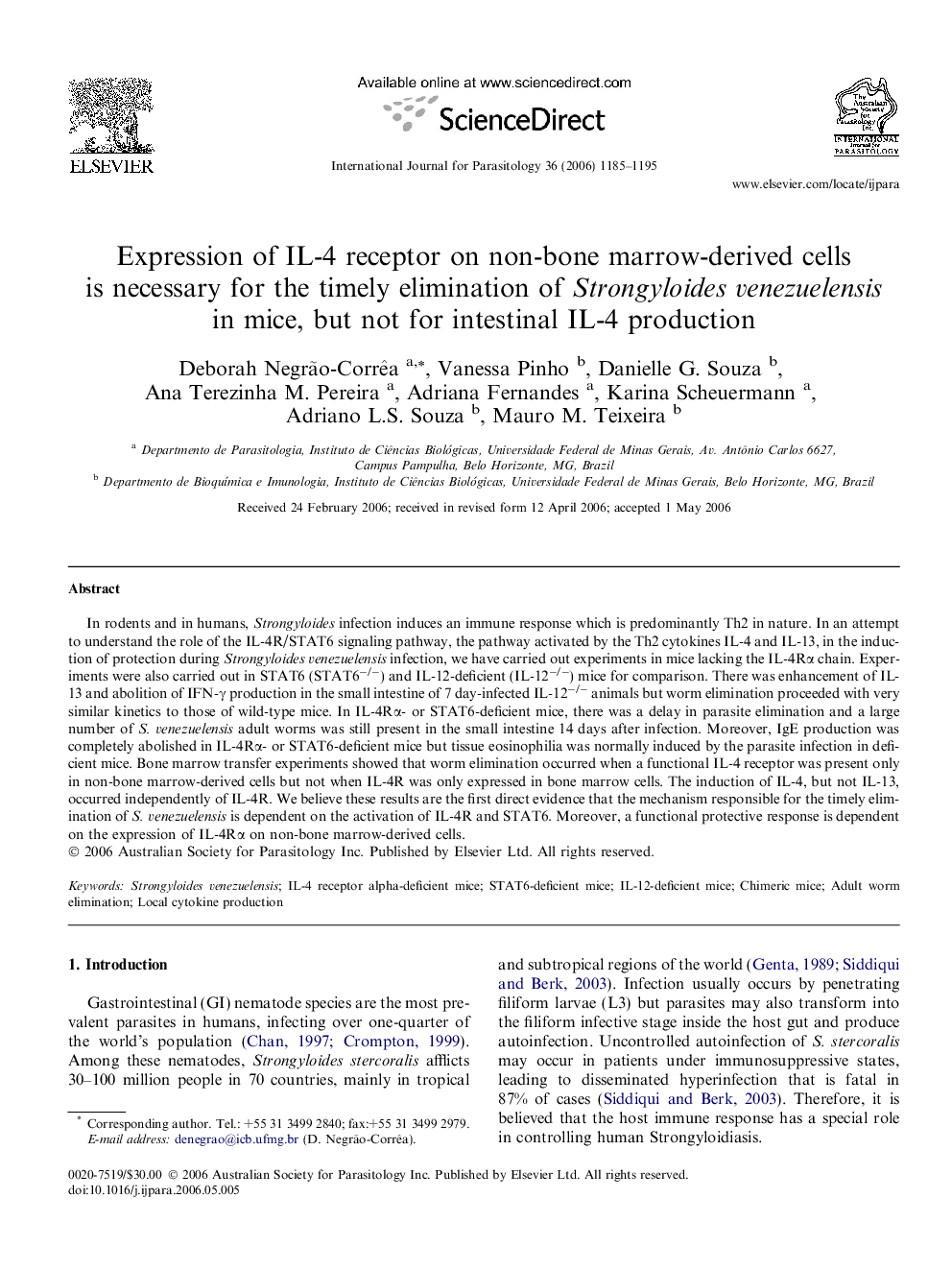| Article ID | Journal | Published Year | Pages | File Type |
|---|---|---|---|---|
| 2436553 | International Journal for Parasitology | 2006 | 11 Pages |
In rodents and in humans, Strongyloides infection induces an immune response which is predominantly Th2 in nature. In an attempt to understand the role of the IL-4R/STAT6 signaling pathway, the pathway activated by the Th2 cytokines IL-4 and IL-13, in the induction of protection during Strongyloides venezuelensis infection, we have carried out experiments in mice lacking the IL-4Rα chain. Experiments were also carried out in STAT6 (STAT6−/−) and IL-12-deficient (IL-12−/−) mice for comparison. There was enhancement of IL-13 and abolition of IFN-γ production in the small intestine of 7 day-infected IL-12−/− animals but worm elimination proceeded with very similar kinetics to those of wild-type mice. In IL-4Rα- or STAT6-deficient mice, there was a delay in parasite elimination and a large number of S. venezuelensis adult worms was still present in the small intestine 14 days after infection. Moreover, IgE production was completely abolished in IL-4Rα- or STAT6-deficient mice but tissue eosinophilia was normally induced by the parasite infection in deficient mice. Bone marrow transfer experiments showed that worm elimination occurred when a functional IL-4 receptor was present only in non-bone marrow-derived cells but not when IL-4R was only expressed in bone marrow cells. The induction of IL-4, but not IL-13, occurred independently of IL-4R. We believe these results are the first direct evidence that the mechanism responsible for the timely elimination of S. venezuelensis is dependent on the activation of IL-4R and STAT6. Moreover, a functional protective response is dependent on the expression of IL-4Rα on non-bone marrow-derived cells.
